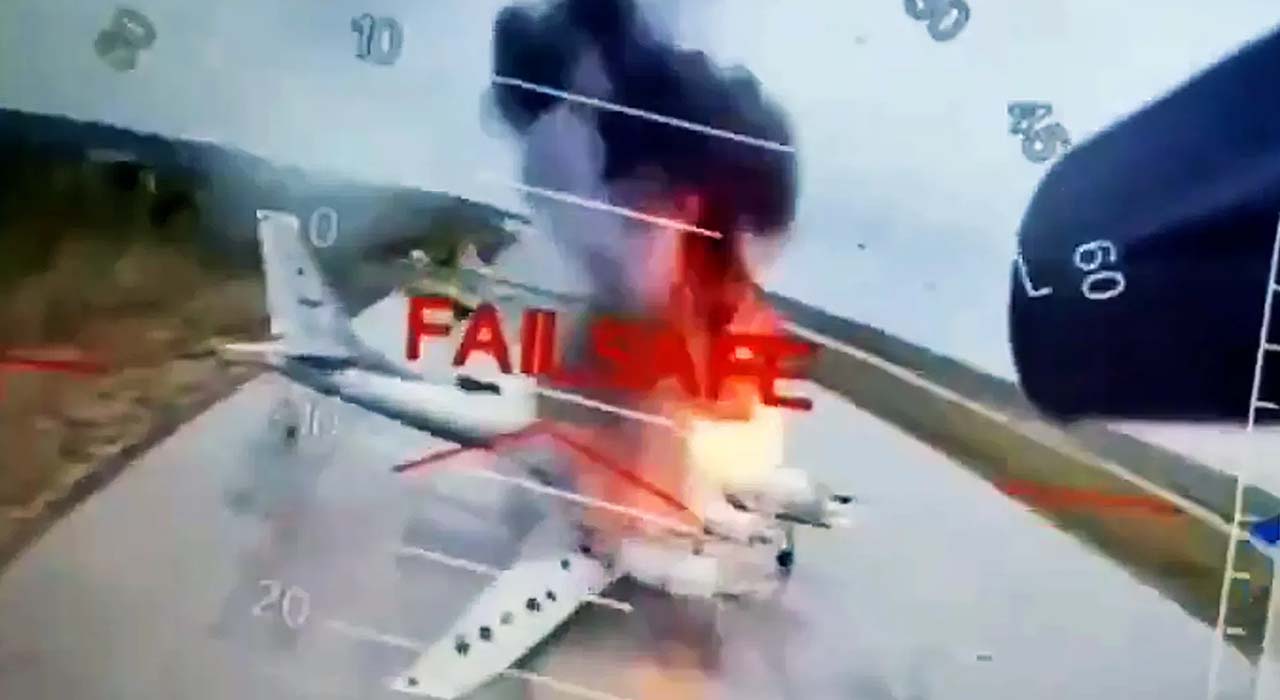4 June, 2025
Ukraine’s Deep Strikes and the Strategic Implications for Russian Deterrence and Homeland Security
Ukraine’s recent campaign of deep strikes into Russian territory—including the audacious Operation Spiderweb on 1 June 2025, which targeted bomber bases using FPV drones smuggled in civilian vehicles—marks a pivotal shift in the nature of the war. While much commentary has focused on the superficial spectacle or the tactical novelty of drone swarms, a deeper strategic picture is emerging. Ukraine is transitioning from a strategy of conventional defence to one of long-range, decentralized, and psychological disruption of Russian internal stability and deterrent posture. This article examines the structural implications of this shift for Russian internal security, strategic airpower, and the broader balance of coercion.
The Tactical Shock vs. the Strategic Signal
Most headlines emphasize whether Tu-95MS aircraft were destroyed or merely damaged. But this binary framing misses the real issue: the irreversibility of long-term degradation. Russia cannot easily replace these platforms. The production lines for strategic bombers like the Tu-95MS, Tu-160, and Tu-22M3 were shut down decades ago. Spare parts must be reverse-engineered, cannibalized, or painstakingly manufactured in a sanctions-constrained industrial environment.
Ukraine’s use of small, low-cost drones to penetrate deep into Russian territory—at Diaghilevo and Ivanovo airbases near Moscow, Belaya and Ukrainka in Siberia, and even Olenya on the Kola Peninsula, as well as against civilian airports near Moscow—has exposed a structural vulnerability: Russia’s inability to seal its rear areas against unconventional infiltration and sabotage. These attacks demonstrate that Russian homeland security is porous, and that its coercive nuclear airpower component is operationally brittle.
Sanctions, Scarcity, and Repair Bottlenecks
Even if bombers are not permanently destroyed, the Russian Aerospace Forces face a difficult logistical challenge. Sanctions restrict access to critical dual-use components, advanced electronics, and composite materials. Skilled labour, precision tooling, and repair capacity are in finite supply. Every damaged platform must now be viewed as a semi-permanent loss unless proven otherwise.
This creates a cumulative degradation of capacity over time. The inability to rapidly reconstitute losses will erode not just Russia’s material ability to launch cruise missile attacks against Ukrainian infrastructure, but the credibility of its long-range deterrent as perceived by adversaries—and by its own elites.
Subornation and Internal Penetration
Perhaps more alarming for Moscow is what these operations reveal about internal control. Operation Spiderweb involved covertly moving modified shipping containers containing drone equipment near to military airfields, presumably with the knowledge or assistance of local individuals. This implies not only intelligence penetration but a growing capacity to suborn individuals within Russian territory—whether motivated by ideology, money, coercion, or desperation.
If Russian authorities cannot prevent these kinds of operations—carried out on their own soil, at strategic installations, during wartime—it calls into question their ability to protect more sensitive facilities, including nuclear storage and command-and-control sites.
Guerrilla Strategy at Strategic Scale
Ukraine’s strategy borrows from classical guerrilla doctrine: hit where the enemy is weakest, retreat into the shadows, and disrupt morale. But what makes this campaign distinct is its scale and strategic intent. These are not random attacks. They are coordinated, multi-vector, and psychologically targeted, aimed at undermining the myth of invulnerability in Russia’s heartland.
By hitting symbols of Russian power—strategic bombers, major airports, and military logistics nodes—Ukraine projects initiative and resilience. It shifts the psychological burden onto Russia’s elite, who must now worry about personal and infrastructural security far from the front lines.
The Strategic Problem for Russia
Moscow now faces a trilemma:
- Overcommit to internal defence and sap offensive potential.
- Underreact and risk erosion of deterrent credibility and elite confidence.
- Escalate externally to distract and restore dominance, with unpredictable global consequences.
Each option carries costs. The most dangerous path may be the second—denial and paralysis.
Conclusion: The New Geography of War
Ukraine’s deep strike campaign marks the emergence of a new geography of war—one in which physical distance from the front no longer confers safety, and in which strategic deterrence assets are exposed to asymmetric erosion. Russia, once assumed to possess strategic depth, now finds its infrastructure within reach of makeshift technologies and networks of suborned operatives.
For Western military and strategic analysts, the lesson is clear: the future battlefield is not just at the border or in the air—it is in every warehouse, roadside, and repair depot behind the lines. Strategic deterrence can be undone not only by missiles and doctrines, but by clever improvisation and symbolic attrition.
Comment on this article on LinkedIn.
About the Author
Richard Martin is the founder and president of Alcera Consulting Inc., and the creator of The Strategic Code—a doctrine for leaders navigating volatility, constraint, and conflict.
His mission is simple: equip leaders to exploit change and achieve strategic coherence. Through his advisory work, writing, and tools, he helps senior decision-makers see clearly, understand deeply, and act decisively in high-stakes environments.
Richard is the author of Brilliant Manoeuvres: How to Use Military Wisdom to Win Business Battles, and the developer of Strategic Epistemology and Worldview Warfare—frameworks that decode the beliefs, values, and power structures shaping strategic action in a contested world.
www.exploitingchange.com
© 2025 Richard Martin

